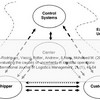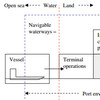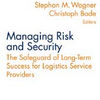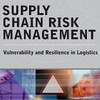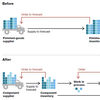 New Zealand is probably not the fist country that comes to mind when thinking of state-of-the-art transportation lifeline engineering. Nonetheless, I think it is time to consider New Zealand as being one of the countries at the very forefront. A 2008 research project, initiated by the New Zealand Transport Agency, provides a close look at how New Zealand practices lifelines engineering. The report is well-written, to the point and provides insight sand recommendations that are applicable not only to New Zealand, but to road and transport authorities anywhere.
New Zealand is probably not the fist country that comes to mind when thinking of state-of-the-art transportation lifeline engineering. Nonetheless, I think it is time to consider New Zealand as being one of the countries at the very forefront. A 2008 research project, initiated by the New Zealand Transport Agency, provides a close look at how New Zealand practices lifelines engineering. The report is well-written, to the point and provides insight sand recommendations that are applicable not only to New Zealand, but to road and transport authorities anywhere.
The New Zealand Lifelines Engineering Project
The project examined and compared lifelines engineering practice at three levels – international, regional and individual road controlling authorities, its level of integration in road controlling authority management practices, and its relationship to the resilience of road networks to natural hazards.Relative risk exposures arising from natural hazards and their impacts on regions were assessed at a qualitative level, highlighting the importance of a comprehensive lifelines approach throughout much of the country.
What is lifelines engineering?
In the report, the term ‘engineering lifelines activity’ or other references to ‘lifelines’ refers to
a collaborative inter-utility and cross-sector planning process to reduce the pre- and postemergency impacts of low probability disaster-scale events.
Note the emphasis on low-probability and disaster-scale events. I find this very interesting, because it is contrary to what I use in my research on sparse transportation networks.
What are lifelines?
The report defines lifelines as
essential ‘utility’ services which support the life of the community – such as water, wastewater and stormwater, power, gas, and telecommunications and transportation networks.
Also worth noting is that
there is a high level of dependence by other lifeline utilities on roading networks – for example, water, sewerage, power and telecommunications services all use the road corridor and often also rely on structures such as road bridges. A failure of part of the road network may not only result in the consequential loss of another service, but also make access more difficult to repair and restore the service.
These interdependencies is something that should not come as a surprise. More often than not, however, it does come as a surprise, once disaster has struck.
What is resilience?
The primary objective of the project was to reduce the impact of natural hazards on land transport infrastructure by investigating whether the engineering lifelines approach had increased the resilience of New Zealand’s land transport system. Resilience is defined as
the ability of a system or network to continue to support the community and meet the community’s social, economic and environmental needs, following a major hazard event
There may be the following disruptions to the communities’ needs:
- social – restricted accessibility; unable to reach people; education and health services disrupted
- economic – businesses unable to trade or move goods
- environmental – direct damage
The report suggests a number of parameters that could be used to assess resilience:
- the resistance of the asset itself to a hazard event, i.e. the ‘damaged/usable ratio’
- the network layout and whether there are alternative routes
- the volume of traffic in relation to the level of service offered by the road
- the time that it would take to restore the road network
It is obvious that the resilience of assets, or a network, to hazard events has a direct impact on the communities’ well-being. The full impact on the well-being will of course depend on the consequences that asset failure has on traffic flows and how this actually impacts the community. Fully understanding this is imperative prior to any mitigation measures.
Conclusion
While the report focuses specifically on New Zealand, it is still generally applicable, because roads are an important infrastructure asset, particularly so in times of disaster, something that I will highlight more in my next post tomorrow: Are roads more important than computers?
Reference
Gordon, M., & Matheson, S. (2008). Engineering lifelines and transport – should New Zealand be doing it better? (Research Report 355A): New Zealand Transport Agency.
Downloads
Download the research report here:
- Engineering lifelines and transport – should. New Zealand be doing it better? Part one.
- Engineering lifelines and transport – should. New Zealand be doing it better? Part two.
Related
- husdal.com: Supply chain Disruptions in Sparse Transportation Networks
- husdal.com: Are roads more important than computers?
- husdal.com: Highway Vulnerability and Criticality Asssessment
Links
- resorgs.org.nz: How New Zealand develops resilient organizations

